In a true totem pole configuration, shoot thru usually does occur for a very short time during switching.
However, what you have is not a totem pole configuration. You have two emitter followers back to back. In this case, you will not get shoot thru. For each transistor to be on, the base has to be one junction drop towards the collector voltage from the emitter. Your double emitter follower therefore has a 2 junction drop (about 1.2-1.4 V) deadband over which neither transistor will conduct.
For example, let's say Vtp is 6 V and that each transistor needs at least 600 mV B-E voltage to turn on in a meaningful way (actually -600 mV for the PNP, but this is implied in this case). That means when the right side of R2 is in the range of 5.4 to 6.6 V, both transistors are off. If this voltage goes above 6.6 V, the top transistor will start to come one, which causes current to flow out of its emitter, which raises Vtp to be 600-700 mV below the driving voltage. The same works with opposite sign for the bottom transistor. When the driving voltage goes below 5.4 V, the bottom transistor starts to conduct and sink current thru its emitter, which in turn pulls Vtp low to stay 600-700 mV below the driving voltage.

